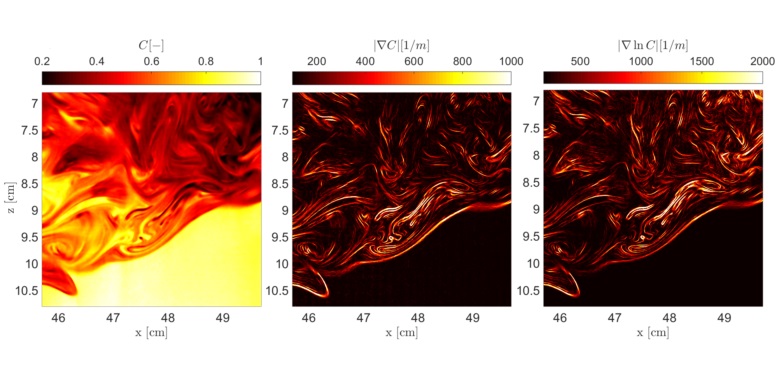Mixing of inertial particles across a density interface
Turbulence is ubiquitous in nature and so is its ability to form interfaces and promote mixing and dispersion of species and particles across them. Sharp and strongly convoluted interfaces exist at the edges of free-shear flows such as jets or wakes. In environmental flows, the situation is further complicated, for instance due to the presence of stratified layers. It is known that density layers inhibit the mixing and dispersion of particles in the direction normal to the stratification. However, density layers may also enhance mixing by inducing diffusive migration of particles across these layers, posing the question of what will happen when different effects concur.
We conduct particle tracking measurements and direct numerical simulations to explore mixing and dispersion of inertial particles across a density interface. In particular the project focuses on:
- interfacial motions and development of instabilities,
- transport velocities of neutral and inertial particles across the density interface,
- the degree of clustering and dispersion of inertial particles.

